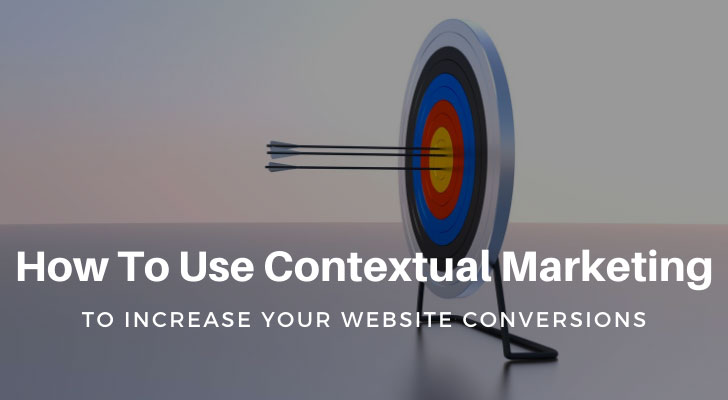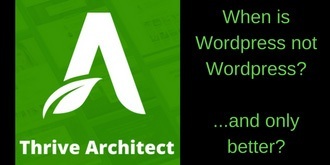In today’s digital stratosphere, competition is rife. You can be just one step behind your rivals but quickly find yourself missing out on the latest marketing trends – and when you’re online to make money, you can’t afford to be late to any marketing party.
So what’s the buzz?
Despite appearances, digital marketing isn’t a one-size-fits-all affair – and the latest marketing trend takes full advantage of audience diversity. We’re talking, of course, about contextual marketing.
Those who are on or near the cutting edge are using contextual marketing to offer a more personalised and engaging customer experience.
Keep reading to find out how you can use contextual marketing to increase conversions on your website, grow your customer base, and attract and retain your customers.

What is Contextual Marketing?
Put simply, contextual marketing is where a business tailors their content to the needs of specific audiences. This can be done in many ways - from tailoring the range of social share buttons a user sees based on their previous activity, to using event tracking on web pages to see how often a user lands on a certain topic or category.
When you tailor the content a visitor sees based on their history, pain-points and needs, you offer them a ‘smart content experience’ that puts them front and centre. Ultimately, it comes down to creating a positive user experience (UX) and serving the right message to the right person at the right time
Is Contextual Marketing Right For Your Business?
More companies use contextual marketing than you might think. In fact, a survey by eConsultancy suggests that 94% of companies think personalization is critical to their success.
But it’s not right for every business. Firstly, if your product and audience are already very niche, it’s unlikely you’ll benefit from breaking down your audience any further. Secondly, if you’ve created your website using a website builder, you’ll find it harder to adapt to different audiences because most don’t offer dynamic content.
Dynamic content is a web component that changes based on a user’s past interactions with your site or other sites on the web, e.g. their ‘previously viewed’ items or checkout abandonment history.
If your website doesn’t support it, you’ll have to:
- Structure static web content to appeal to different audiences, e.g. by creating niche landing pages and linking to these from your home page
- By using a third party customer relationship management software (CRM) like Hubspot
Now, let’s talk about how to use dynamic content in practice.
Use Dynamic Content To Implement Contextual Marketing
Say a user has been interacting with your site and has downloaded an eBook on SEO. When that customer returns to your site, you could serve them the same content offering. Or, you can use dynamic content to offer them something different or something that moves them onto the next stage of your funnel. For example, an SEO checklist or free trial offer for your SEO software or course.
Instead of a web visitor experiencing the same content page after page, their experience can be personalised in line with their previously known habits. Happily, 61% of customers are willing to give up an amount of personal data if they think they will benefit from it. Which leads us to our next point...
Use It, But Don’t Abuse It
Don’t personalise for the sake of it. Just because you have someone’s name, doesn’t mean you need to use it at each and every touchpoint. Imagine a conversation face-to-face where every reply had your name in it… it’s unnecessary, annoying and, when coming from a website, disconcerting.

Contextual marketing should always add value to the user. Think about websites where contextual marketing is used well – like Netflix. The content streaming juggernaut suggests recent releases based on recently watched shows. This is a subtle way of using contextual marketing to enhance the customer experience. By serving content the user wants, you’re saving them time and energy searching through your site and not assuming a one-size-fits-all approach.
Digital Trends reports that 73% of customers prefer to do business with companies who personalise content. And, according to HubSpot, companies that invest in digital personalisation experience 20% higher conversion rates than those that don’t.
How I "Finally" Make Over $7,000 Monthly Income
"The most valuable thing I've ever done!"
Using Contextual Marketing To Drive Conversion Rates
Don’t be a try-hard
The key to contextual marketing is to start small. It can be tempting to go all-in and personalise every moment. But it’s unnecessary and will feel too try-hard. Use contextual marketing to help your web visitors, as much as to benefit your sales funnel.
Be transparent
Always been completely transparent about the data you collect and use. Not only is this a legal requirement, but it also shows you have a customer-centred approach. Take on board suggestions from the likes of Apple’s keynote at WWDC 2020, which emphasised strong privacy controls and greater user choice regarding data they share.
Use demographic targeting
Use your website analytics tool to dig down into your user’s demographic data. Create personas that segment your audience by conditions like job title, seniority level, previous buying habits, geographical location and more.
Use these personas to target your dynamic content and keep an eye on your metrics to make sure you’ve got it right.
Don’t neglect first-timers
Remember, some of your web visitors will only be able to see your default content, either because they’ve not interacted with your brand before or because their data privacy controls are set high. So, don’t neglect your site’s baseline content. It still needs to be optimized to perform well in search engines and offer something to the broadest range of your potential customers.
Conclusion
Contextual marketing is a great way to show your customers you care and are truly invested in making the web process easier for them by automatically giving them what they need. Used well, it can positively impact your bottom line and create long-lasting relationships with your new and potential customers.

Author Bio: Lucy Farrington-Smith
I'm Lucy Farrington-Smith, a 27-year-old freelance writer. I started out as an actor before I put the script down and chose to write my own words instead of saying someone else’s. One Master’s in Creative Writing and many coffee cups later; you can now find my bylines on HuffPost and Metro.co.uk.

